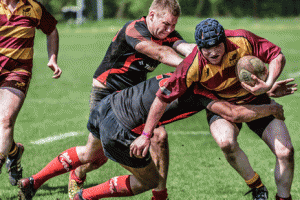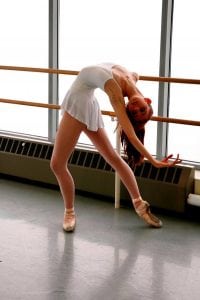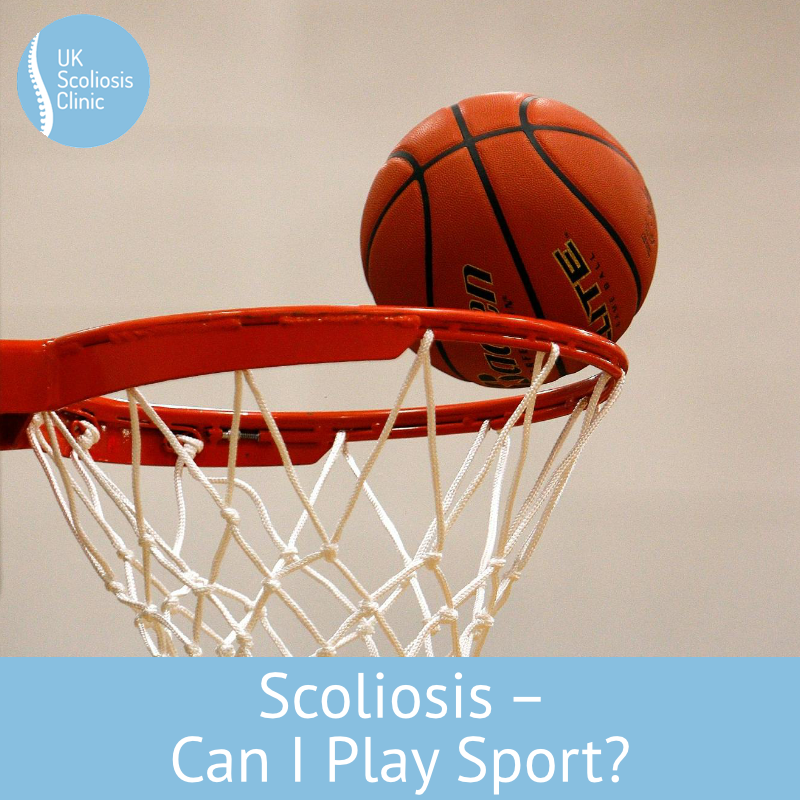When many people discover they have scoliosis (or when parents discover their child has scoliosis) one of the first things they ask is often “do I need to give up X sport”.
There is a great deal of misinformation around scoliosis and sport, perhaps this is mainly because there is a perception that scoliosis and sport don’t mix. It’s certainly true that on average scoliosis sufferers do tend to be less physically active – in some cases this might be related to the condition (severe scoliosis can make exercise more difficult)[1] but the cause can also often be social in nature.
It’s also true that some activities (Especially those which involve contorting the spine) do tend to correlate with a higher incidence of scoliosis sufferers amongst its participants. Ballet and rhythmic gymnastics are good examples.
Today, we’ll attempt to tease out some easy to follow guidelines for scoliosis sufferers – here’s what we do know:
Should I exercise with scoliosis?
Cardiovascular exercise is always good for you.
Whether you suffer from scoliosis or not, exercise in any form is going to be beneficial to your body. Exercise results in health benefits such as an increase in cardiovascular health, increased aerobic capacity, increased bone density, improved mental outlook, reduced body fat and increased life expectancy.
This means that in general, it certainly is advisable for scoliosis patients to exercise regularly. What might need some consideration is the type of exercise undertaken – especially when dealing with adolescents who are still growing and are therefore more skeletally immature.[2] This being said, much of the advice that goes for adolescent scoliosis patients could also be applied to non-scoliosis patients!
Which exercises should scoliosis sufferers be careful with?
At the UK scoliosis clinic, we focus heavily on individualised care. Rather then taking the group treatment or “bootcamp” route, we tailor scoliosis treatment to an individual’s exact requirements. For that reason, we’re not so quick to say that certain exercises should be avoided altogether. That being said, there are some forms of exercise which need to be performed carefully and with a mind to avoiding stressing the spine, especially in adolescents. These include:

Impact sports carry a risk to the spine for everyone
Impact sports
Impact sports such as rugby are a cause for concern not only with scoliosis patients, but with adolescents in general. The risk here is obvious, an impact injury always carries a risk of concussion, spinal injury or damage to the joints. In a scoliosis sufferer, this kind of injury might serve to worsen the progression of the scoliotic curve. [3]
When considering impact sports, we should also include athletic events such as long jump or high jump which can place significant load on the spine if performed with poor technique.
Adolescents are at the highest risk here, but much of this can be mitigated by playing non-impact versions of the sport in question, such as touch rugby – which is probably to be recommended anyway!
Resistance training
Some forms of resistance training, such as free weight lifting can post a risk to the scoliosis sufferer. The curvature of the spine disturbs the body’s natural balance and makes it more likely that an injury arising from spinal loading will occur. This is not to say that resistance training should be avoided altogether – instead, targeted programs using appropriate equipment (lean towards fixed weights and bands) should be used. Also of concern is the mount of weight used during resistant training , due to increased lading or compressional forces, which can compress the growth plates and potentially inhibit vertebral body growth and may progress or worsen scoliosis.
At the UK scoliosis clinic, we are especially well equipped to work with patients to improve their balance and posture, which will greatly reduce this risk – through methodologies such as chiropractic biophysics, postural analysis and scoliosis specific exercise.
“One-sided” activities
Asymmetric loading simply means that the spine is being subjected to different degrees of force on either side. If you carry a rucksack on your back by a single strap, you’re asymmetrically loading your spine.
Some practitioners suggest that activities which tend to asymmetrically load the body (most things with a bat or racket) should be avoided – however this approach is too broad in most cases and tends to cut off many of the most enjoyable sports! (this also serves to demonstrate the importance of individual patent cantered care!)
The risk with asymmetric sports is that over time, one side of the body (and of the muscle supporting the spine) becomes stronger and larger than the other side – this factor can then serve to worsen scoliosis. Assuming a proper warm up there is very little risk in actually participating in these kinds of sports.
The solution is to carefully monitor growth and symmetry and perform targeted exercise on the non-playing side of the body (usually the non-dominant side) in order to balance out development. Again, this is important to scoliosis patients, but good advice for anyone!
Are there exercises which cause scoliosis?

Ballet dancing can increase scoliosis risk substantially
There is some evidence that certain types of exercise – those which contort the spine – may promote scoliosis. These include ballet, dance and rhythmic gymnastics. Various studies have suggested that scoliosis incidence is anywhere between 12 and 30% more common amongst gymnasts[4]
Much more research on these correlations is required in order to make concrete determinations about the risk posed by these kinds of activities – it may, for example, simply be the case that scoliosis is more likely to be noticed among these disciplines, since there is more awareness of it.
It seems reasonable, however, to suggest that you book an appointment for an individual consultation before continuing with dance, ballet or gymnastics. In most cases, scoliosis does not need to prevent you from participating – but a personalised treatment plan should be put in place to ensure you are properly supported.
Which exercises are good for scoliosis sufferers?
It was once thought that swimming might be an effective treatment for scoliosis, and there’s no doubt that some scoliosis sufferers do use swimming as an enjoyable part of their scoliosis specific workout routine. Recent research has unfortunately suggested that swimming is not an effective treatment for scoliosis[5] – but more research is required in this area. Incidentally, the same study showed that swimming might increase the risk of hyper-kyphosis.
In general, low impact exercise is ideal for scoliosis sufferers, as is exercise which does not progress to the point of exhaustion. Since a many scoliosis patient also suffer with poor coordination exercises designed to improve coordination can also be beneficial as this helps to improve the body’s sense of position. Exercise taken to the point of exhaustion increases the risk of injury in anyone but carries more risk for the scoliosis sufferer.
Therefore, shorter runs or working out on an elliptical machine is a good alternative for basic cardio workouts. Biking is also a good alternative, as long as there is not too much forward flexion of the lumbar spine.
Summary
The most important factor to take away from this blog is the need for individualised care. Each scoliosis sufferer is an individual and requires a treatment plan which works for them and their choice of sport.
At the UK scoliosis clinic, we have in house sports therapists, postural specialists and chiropractors certified in chiropractic biophysics who can work with you to make modifications to your exercise routine to minimise risk whatever your sport!
[1] Pediatric Exercise Science. 30, 2, 243-250, May 2018
[2] Eur Spine J. 2011 August; 20(Suppl 3): 415–419. Beneficial effects of aerobic training in adolescent patients with moderate idiopathic scoliosis
[3] J Pediatr. 2015 Jan;166(1):163-7. doi: 10.1016/j.jpeds.2014.09.024. Epub 2014 Oct 25.
[4] https://scoliosisclinic.co.uk/blog/ballet-dancing-increase-risk-scoliosis/
[5] J Pediatr. 2015 Jan;166(1):163-7. doi: 10.1016/j.jpeds.2014.09.024. Epub 2014 Oct 25.






